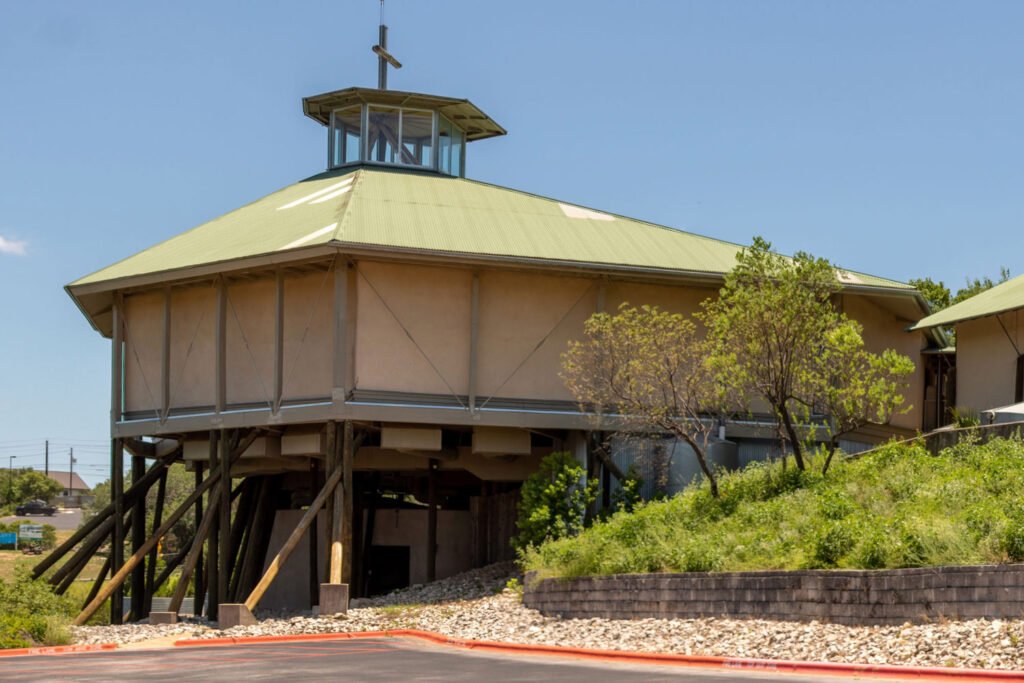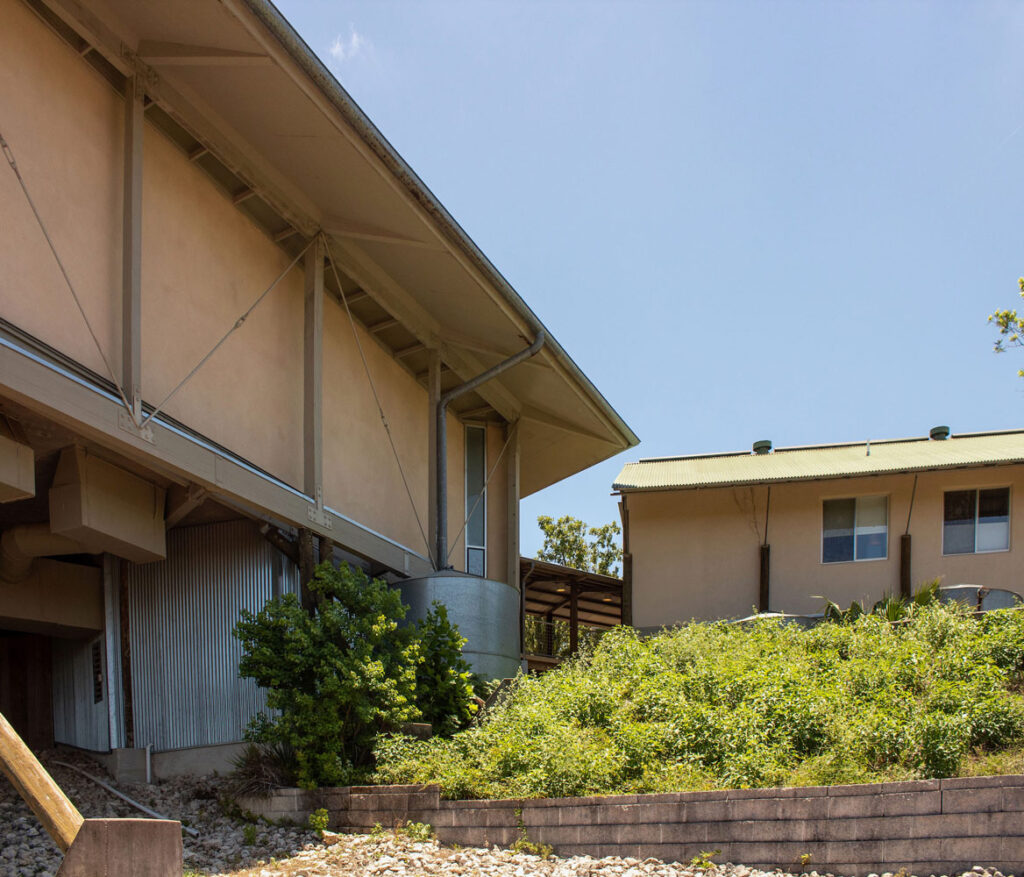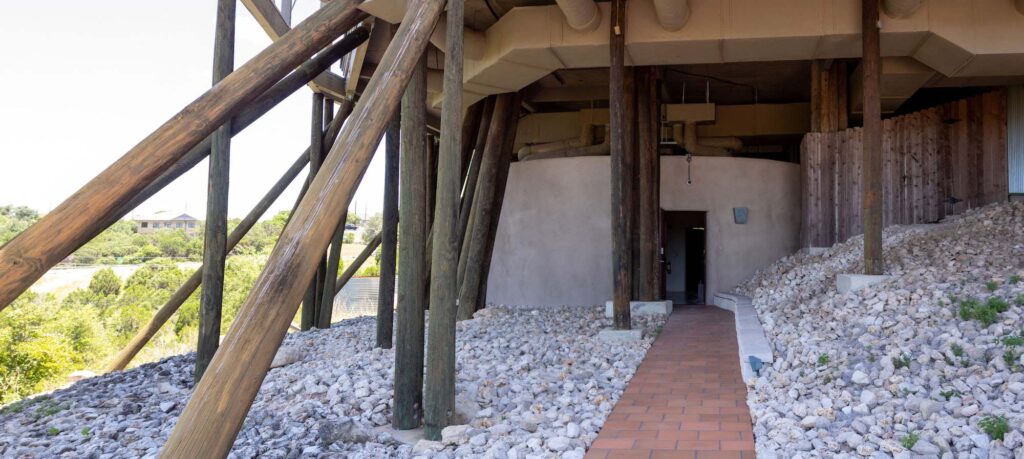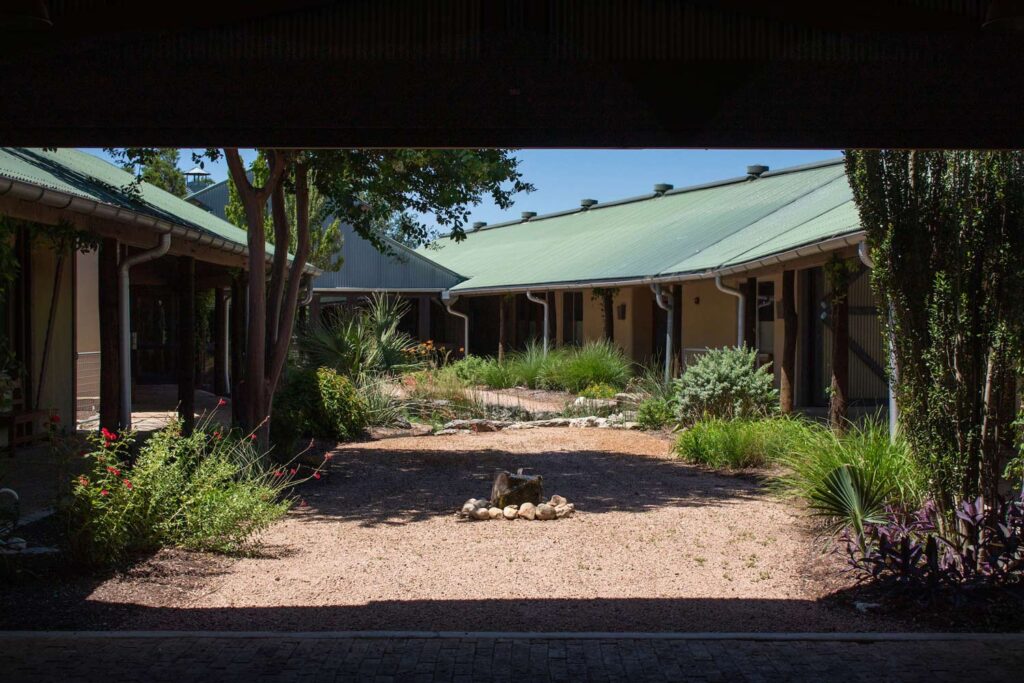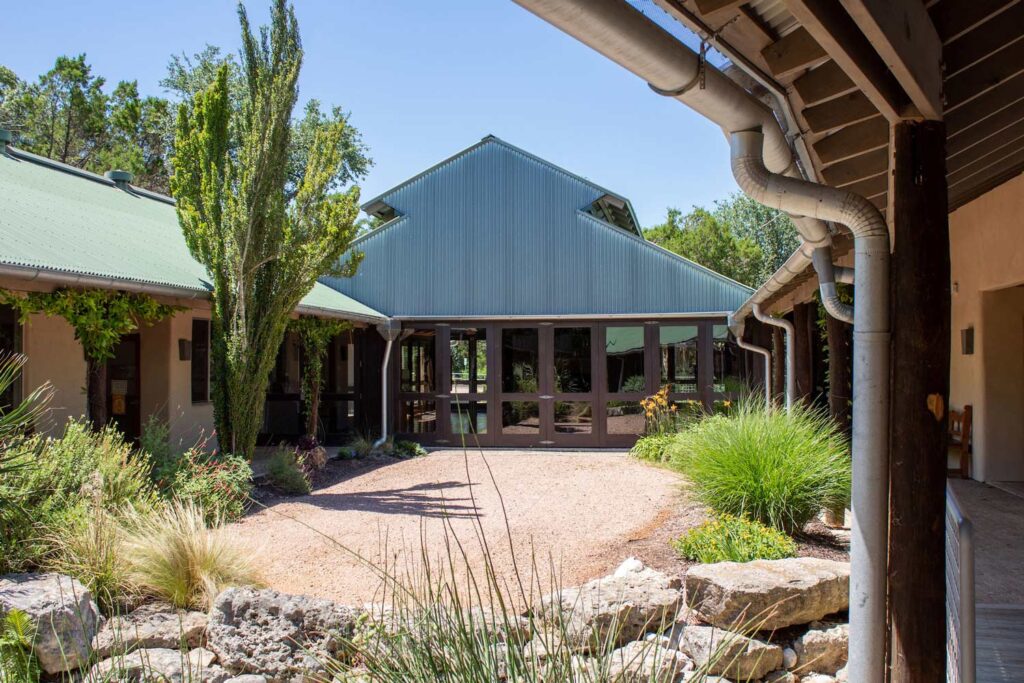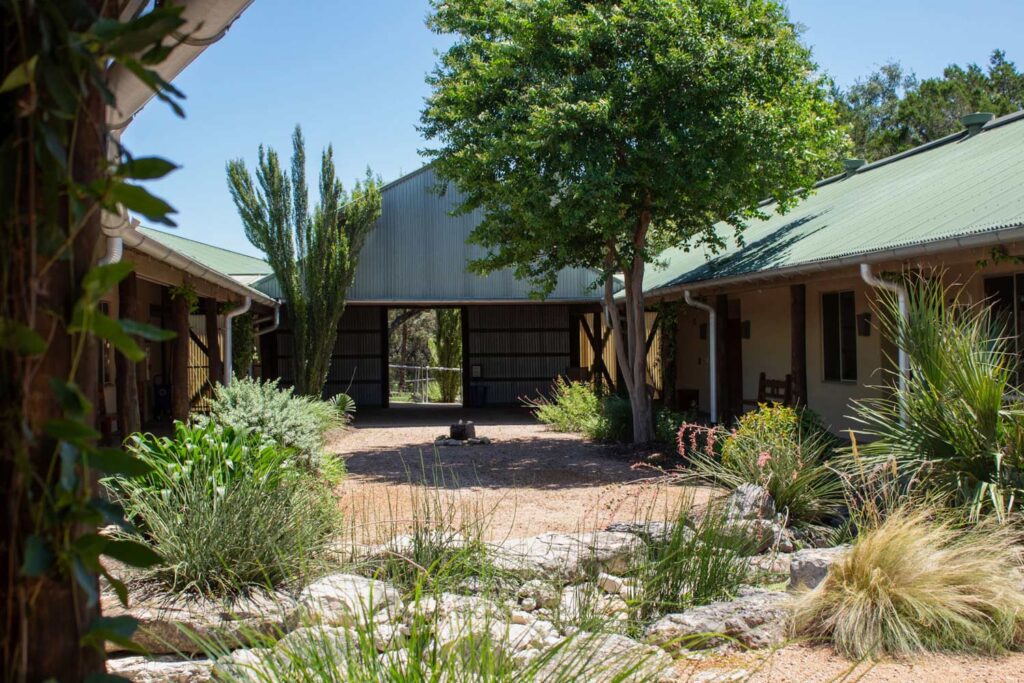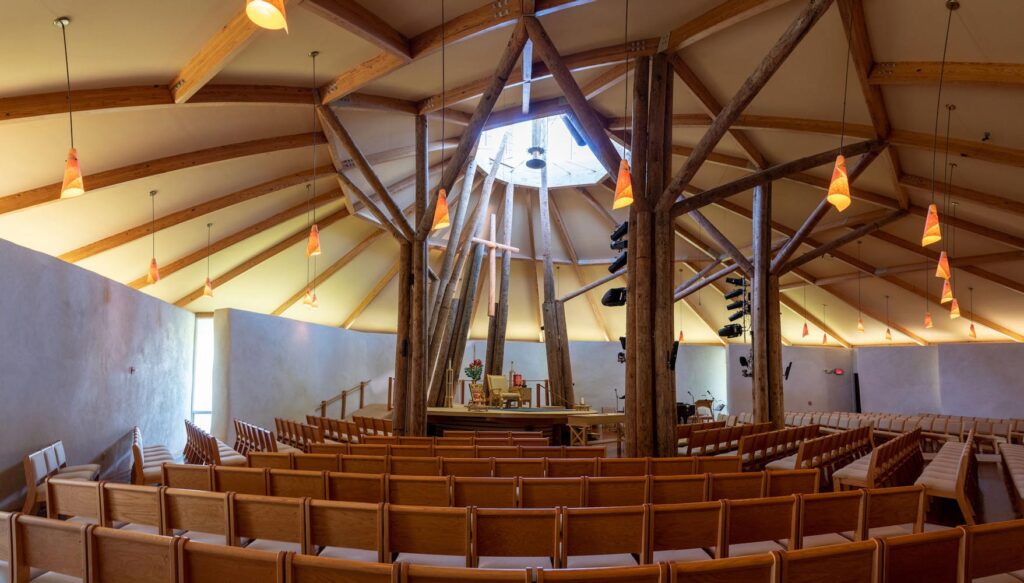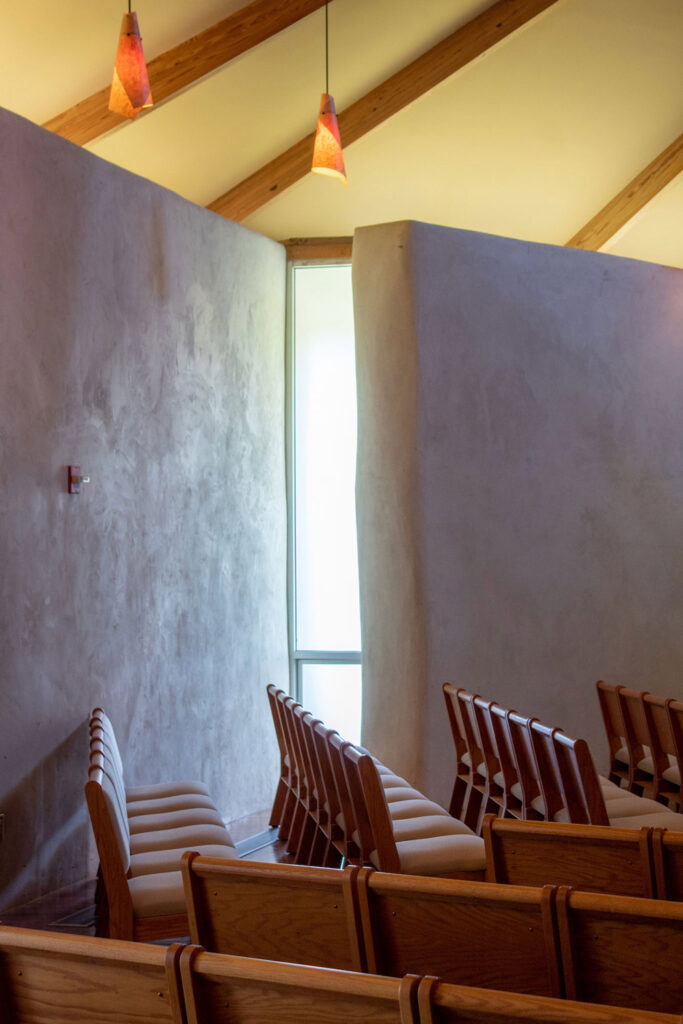- Built:
- 1997
- Architect:
- Lake|Flato
- Style:
- Contemporary, Vernacular
Description
This contemplative, non-denominational Christian church exemplifies contemporary vernacular Texas architecture. The complex utilizes rainwater collection cisterns, natural ventilation, and daylighting throughout its spaces, which include offices, a community room, classrooms, a small meditation room, and a large sanctuary.
Placemaking
Perched atop a hill along Bee Caves Road, the Church of the Conscious Harmony is a little-known, yet almost monumental, building located southwest of Austin. Many have remarked on its striking appearance; the large, round sanctuary seemingly defies gravity atop its forest of timber supports. This arrangement evokes a perception of precariousness, as if the building could be blown over by a strong wind, yet simultaneously demonstrates significant structural ingenuity. What is visible from the road, however, represents only a fraction of this unique place, as a rich complex lies discreetly hidden among the trees beyond.
From the road, the sanctuary appears to be the church’s primary space, but it actually takes on a secondary role in the overall complex. From the gravel parking lot scattered with native trees, entry begins by descending a flight of stairs marked by a sign proclaiming, “All who enter are welcome.” The path then narrows—squeezing visitors between offices on the left and the high wall of a courtyard on the right—before opening back up suddenly to reveal an expansive, panoramic view of the surrounding landscape.
Turning a corner, one finally steps “inside” the walled garden courtyard. This tranquil space is encircled by small classrooms, each featuring large windows that open to both the landscape and the courtyard itself. Every few classrooms, a gap in the façade forms a small niche with massive doors that open directly to the outdoors, creating ideal conditions for cross-ventilation within the courtyard. A continuous covered walkway, reminiscent of a cloister in a classical monastery, connects the classrooms and encircles the courtyard. This area exudes a quiet, contemplative atmosphere. The usual noise from Bee Caves Road disappears, replaced by a gentle breeze. While it can become lively between Sunday school classes or group yoga in the community room, the courtyard quickly returns to its quiet existence. At either end of the courtyard, two community spaces—one indoors and one outdoors—punctuate the rows of identical classrooms.
Crossing the outdoor community space leads to the sanctuary. Inside, the walls are stark, with virtually no ornamentation save for a single, small icon mounted next to the entry. As one congregant aptly put it, “It is not the building that provides the color and texture of our church, but the people.” The space itself creates a sense of movement: a series of walls appears to pinwheel around, with the roof seemingly suspended above them, allowing light to leak in from the gaps between.
Around each corner, one can find their “place” at the Church of the Conscious Harmony. There are places within places, and this layering leads to a rich experience. The architecture embraces simple, raw materials like wood and corrugated metal, and features gabled roofs with deep overhangs that blend seamlessly into the natural landscape. The church also incorporates numerous features designed to nurture the land and minimize its environmental footprint. For instance, the parking areas are primarily gravel, allowing rainwater to naturally seep into the earth rather than becoming runoff. The walls and insulation are crafted from strawbales, a material with significantly lower embodied energy compared to conventional foam or fiberglass.
The congregation played a central role in both the design and construction of the church. Each member was encouraged to participate, both to challenge themselves with unfamiliar tasks and to instill a deeper meaning into the space created by their own labor. One congregant recounted a story about laying brick pavers in the outdoor meeting area without prior masonry experience. After completing the task, they discovered waves in the brick where some had settled, and decided that the work had to be torn up and replaced (twice!). This painstaking dedication reveals a truth about the church itself: it is not a materially rich place—there is no marble, ornate paintings, or extensive decoration. But the intention and care invested in the space are equally, if not more, powerful. – James Mustillo, AIA
James Mustillo, AIA
